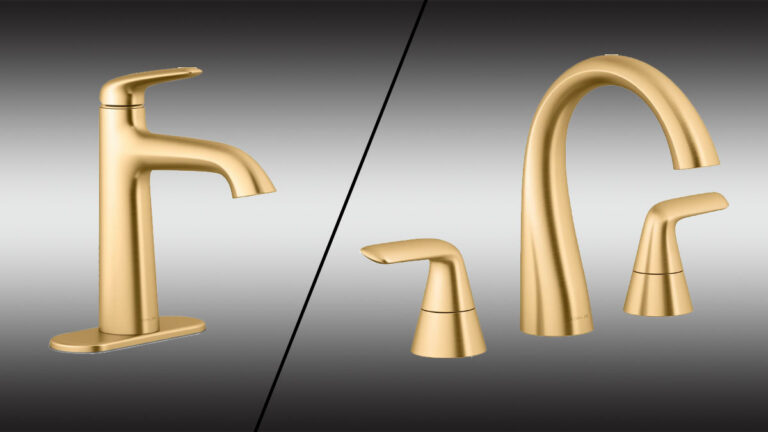How Much Water Does a Standard Bathtub Hold?
When you’re filling up your bathtub after a long day, you might wonder just how much water it actually holds. Knowing the water capacity of your bathtub isn’t just trivia, it can impact your water usage, utility bills, and environmental footprint. Whether you’re curious for practical reasons or aiming to conserve water, understanding the volume a standard bathtub holds is essential. In this guide, you’ll learn everything about common bathtub dimensions, how to accurately measure water volume, and smart ways to reduce water waste without sacrificing your relaxing soak.
Understanding Bathtub Sizes And Capacities
Common Dimensions Of Standard Bathtubs
Most standard bathtubs in the US measure about 60 inches long, 30 to 32 inches wide, and 14 to 16 inches deep. These dimensions provide enough space for a comfortable bath without taking up excessive room in your bathroom.
Types Of Standard Bathtubs And Their Water Capacity
There are several types of standard bathtubs, including alcove, freestanding, and drop-in styles. Each has slightly different shapes which influence water volume. For instance, alcove tubs, often rectangular, typically hold between 40 and 50 gallons of water when filled to capacity, while freestanding tubs may vary more due to design flair.
Factors Affecting Water Capacity In Bathtubs
While the tub’s size sets the maximum potential volume, several factors affect the actual water capacity:
- Tub Shape: Oval or irregular shapes can reduce volume compared to rectangular tubs of the same footprint.
- Fill Level: You don’t have to fill your tub to the brim for a bath: common practice is filling to about two-thirds full, which significantly lowers water usage.
- User Space: The volume displaced by your body means less water is actually needed to fill the tub up to your comfort level.
Understanding these nuances helps you estimate the water your specific bathtub can hold more accurately.
Measuring Water Volume In A Bathtub
Step-By-Step Guide To Calculate Bathtub Water Capacity
If you want a precise measurement of your bathtub’s capacity, here’s a straightforward method:
- Fill the Tub: Fill your bathtub with water to the level you would normally bathe in.
- Drain and Capture: Use a large container or bucket to collect the water as you drain the tub.
- Measure: Use a measuring jug or bucket with volume markings to measure the total amount of water.
This hands-on approach provides the most accurate estimate for your specific tub and typical usage.
Tools And Methods For Accurate Measurement
Besides the manual method, you can use other approaches:
- Calculations Based on Dimensions: Measure length, width, and depth in feet, calculate volume in cubic feet (Length × Width × Depth), then multiply by 7.48 to convert to gallons.
- Water Meter Readings: If your water meter is accessible, track water usage before and after filling the tub.
- Smart Home Devices: Some modern devices can estimate water flow and usage digitally for convenience.
Using these methods can help verify your tub’s capacity and assist in managing water use more efficiently.
Average Water Capacity Of Standard Bathtubs
Typical Gallon Range For Residential Bathtubs
Generally, a standard residential bathtub holds about 40 to 50 gallons of water when filled to the overflow drain. But, bathing doesn’t require filling it completely, most people use 30 to 40 gallons depending on their preferred fill level.
Comparisons With Other Bathtub Styles
Compared to standard tubs, larger soaking tubs or jetted tubs can hold 60 gallons or more, increasing water use significantly. Conversely, compact tubs designed for smaller bathrooms may hold closer to 30 gallons, helping save water.
Impact Of Fill Levels On Water Usage
Adjusting how full you fill the tub can lead to big water savings. For example, filling your standard tub just a few inches less can cut water use by 10 to 15 gallons per bath without compromising comfort. Being mindful of fill levels not only conserves water but also lowers your utility bills.
Water Conservation And Bathtub Usage
How To Reduce Water Consumption During Baths
If you love baths but want to be greener, try these tips:
- Fill Partially: Use just enough water to cover your body comfortably rather than filling to the overflow.
- Short Soaks: Limit soaking time to reduce evaporation and encourage quicker baths.
- Reuse Bath Water: For non-potable uses like flushing toilets or watering plants, reuse bathwater if safe.
Alternatives To Full Bathtub Fills
Consider showering more often or using a smaller basin for soaking feet or hands. Some people opt for bath bombs or oils in smaller quantities of water to enjoy the benefits without large volumes.
Environmental And Cost Considerations
Water heating accounts for a significant portion of household energy use. Using less water not only helps conserve a precious resource but also cuts down on energy consumption, lowering your utility bills. In areas facing drought or water restrictions, mindful bathtub use becomes even more critical.
By balancing your relaxation needs with sustainable water habits, you contribute positively to the environment and your wallet.
Conclusion
A standard bathtub typically holds between 40 to 50 gallons of water when filled to capacity, but factors like tub shape, size, and your preferred fill level can change that amount significantly. Measuring your own tub’s capacity precisely can be simple with a few practical methods, allowing you to better control water usage. By adopting mindful bathing habits, like filling less, taking shorter soaks, or even reusing water, you can enjoy your bath time guilt-free, supporting both the environment and your budget. So, next time you run the taps, you’ll know exactly how much water you’re using, and how to make every drop count.

